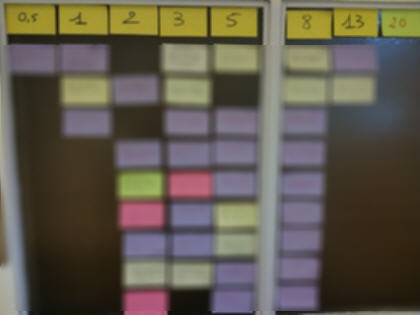Agile coaching tips: make the planning poker easier and more visual !
TweeterPosted by jc-Qualitystreet on 2010/08/11
One of the first differences observed with Agile is the way we estimate the size and duration of an IT project.
The entire team is made responsible for the estimate of the product Backlog (the list of all functionality desired in the product). Indeed, the team is invited to estimate collectively this list of valuable items that will require his work.
Scrum teams use Story Points and Planning Poker for this activity.
- Story Points represent a measurement of the effort required by a team to implement a Story.
- Planning Poker is an effective (and funny) way to assign collectively story points to user stories on the product backlog. It is a special card game based on the Fibonacci sequence. The idea is to pick a representative story and assign it a point value, then estimate the other stories relative to this standard (consensus must be reached for each user story)

Planning Poker Deck
Collective intelligence is the pillar of this new way to estimate … an effective team-based estimation technique but not so natural at first. Relative size and consensus are not so easy for the teams new to agile.
The problem:
Teams often lose the thread of their estimates. They have difficulty in comparing or lack of benchmarks.
An answer:
Use a visual display of the planning poker values in columns, and place the user stories in the appropriate column during the activity.

Visual display of the estimates
Benefits:
- It is an effective form of visual management
- It facilitates comparison and triangulation
- It reinforces the concept of relative size (effort)
- It reinforces the idea that result is not frozen during the activity: change is easy t!


James Grenning said,
I do something similar when there is a large batch of stories. Part of the game is to group stories by relative effort before assigning story point estimates. We use planning poker to assign values after stories have been grouped easiest to hardest. Here is a link: http://www.renaissancesoftware.net/blog/archives/36